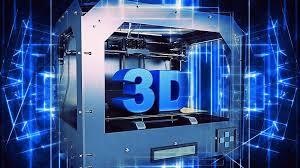3D printing, also known as additive manufacturing, refers to the process of creating three-dimensional objects from digital models by laying down successive layers of material. This innovative technology has transformed various industries by enabling rapid prototyping, customization, and complex geometries that traditional manufacturing methods cannot achieve.
History and Evolution
The evolution of 3D printing spans several decades:
- Early Developments: The concept originated in the 1980s with the invention of stereolithography (SLA) and fused deposition modeling (FDM) technologies.
- Expansion of Applications: Advances in materials science, printing technologies, and software capabilities broadened the scope of 3D printing from prototyping to end-use parts production.
- Mainstream Adoption: Increased affordability of 3D printers and expanding applications across industries accelerated mainstream adoption in recent years.
Technologies and Processes
3D printing encompasses various technologies and processes:
- Fused Deposition Modeling (FDM): Melting and extruding thermoplastic filaments to create layers.
- Stereolithography (SLA): Using UV lasers to solidify liquid resin layer by layer.
- Selective Laser Sintering (SLS): Using a laser to sinter powdered materials (e.g., plastics, metals) into solid layers.
- Binder Jetting: Depositing binding agents onto powder materials to build objects layer by layer.
Applications Across Industries
3D printing has transformative applications in diverse sectors:
- Manufacturing: Rapid prototyping, tooling, and production of customized parts with reduced lead times and costs.
- Healthcare: Medical device manufacturing, prosthetics, patient-specific implants, and bioprinting of tissues and organs.
- Automotive: Prototyping, custom parts manufacturing, and lightweight component production for vehicles.
- Aerospace: Manufacturing of complex geometries, lightweight structures, and components with high performance materials.
- Education: Enhancing STEM education with hands-on learning experiences in design and engineering.
Advantages of 3D Printing
The benefits of 3D printing include:
- Design Flexibility: Ability to create complex shapes and structures that are difficult or impossible with traditional manufacturing methods.
- Customization: Tailoring products to individual preferences and specifications without the need for expensive tooling or molds.
- Speed and Efficiency: Rapid prototyping and on-demand production, reducing time-to-market and inventory costs.
- Sustainability: Minimizing material waste through additive processes and enabling localized manufacturing.
Challenges and Considerations
Despite its advantages, 3D printing faces challenges:
- Material Limitations: Availability of materials suitable for specific applications, especially in high-performance industries.
- Quality Control: Ensuring consistency, accuracy, and mechanical properties of printed parts.
- Intellectual Property: Addressing concerns related to digital piracy and unauthorized replication of designs.
- Regulatory Compliance: Navigating regulatory requirements for safety, quality assurance, and certifications in various sectors.
Future Trends in 3D Printing
Future developments in 3D printing are poised to:
- Expand Material Options: Develop new materials, including composites and biomaterials, for broader industrial applications.
- Scale Production: Enhance scalability for mass production of end-use parts in automotive, aerospace, and consumer goods industries.
- Integrate IoT and AI: Combine 3D printing with IoT sensors and AI-driven analytics for real-time monitoring and optimization of printing processes.
- Advance Bioprinting: Progress in bioprinting technologies for medical applications, including tissue engineering and pharmaceuticals.
Conclusion
In conclusion, 3D printing continues to redefine manufacturing paradigms by offering unprecedented design freedom, customization, and efficiency across industries. As technology advances and adoption grows, addressing challenges, fostering innovation, and embracing sustainable practices will be crucial in unlocking the full potential of 3D printing to drive economic growth, innovation, and sustainable development globally.
